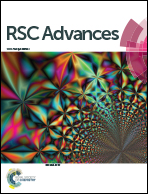The lysis and regrowth of toxic cyanobacteria during storage of achitosan–aluminium chloride composite coagulated sludge: implications for drinking water sludge treatment
Abstract
Coagulation is a key unit operation for cyanobacterial cell removal; however, the potential danger of cyanobacterial cells transferred into sludge is not well understood. In this study, the fate of Microcystis aeruginosa (M. aeruginosa) and secondary metabolites in chitosan–aluminium chloride (CTSAC) coagulated cyanobacteria-laden sludge were investigated during the sludge storage period. The extracellular microcystins (MCs) can be adsorbed onto the CTSAC flocs for six days with a reduced biodegradation rate. Less M. aeruginosa cell lysis was observed in the coagulated system than in the natural cell system, due to the protection of M. aeruginosa by the CTSAC. Furthermore, the residual Al content decreased in the cyanobacteria-laden sludge supernatant. The amount of extracellular organic matter (EOM) stayed low in the coagulated system for four days. Polymerase chain reaction-denaturing gradient gel electrophoresis (PCR-DGGE) analysis showed that coexisting bacteria reduced in the sludge during the initial four days storage time. Interestingly, the CTSAC degradation favored the growth of the M. aeruginosa cells. This study will be helpful for better understanding and managing secondary metabolite pollution problems related to coagulation-generated cyanobacteria-laden sludge during the sludge supernatant recycling process. The use of CTSAC composite coagulant is of practical value in reducing secondary pollution during cyanobacteria-laden sludge storage.


 Please wait while we load your content...
Please wait while we load your content...